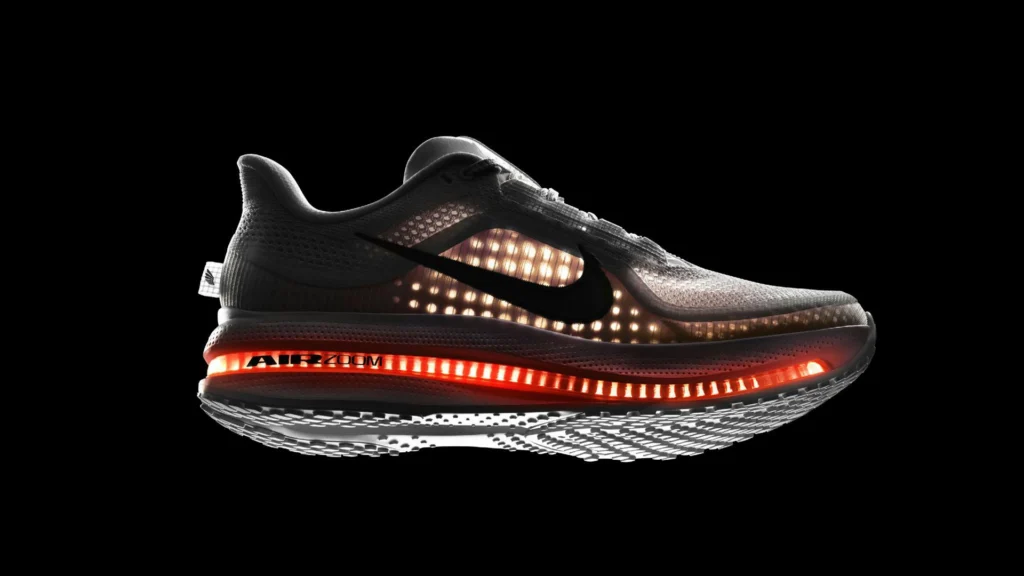Why Nike is the Toyota of Shoes: A $350B Masterclass in Industrial Kaizen

For 40 years, the market has made a fundamental mistake: It calls Nike a “marketing company.”
It’s an easy narrative. We see Michael Jordan, “Just Do It,” and the multi-billion-dollar brand built on athletic legend. But this is a dangerous misreading.
The brand is not the moat. The brand is the exhaust from a relentlessly efficient industrial engine.
Nike isn’t a marketing company. It’s an operations company. Nike is the Toyota of Shoes; a $350B+ empire built not on hype, but on a ruthless, obsessive, multi-decade execution of the Toyota Production System.
They are a case study in industrial kaizen (continuous improvement) disguised as a sneaker brand.
Highlights: The Toyota Thesis
- The Moat is the Machine, Not the Man: Jordan and Tiger Woods are marketing assets. The real moat is the supply chain—a logistics and manufacturing system so vast and efficient it rivals Toyota’s “Just-in-Time” (JIT) model.
- Kaizen as a Product: The “Air” technology wasn’t just a single R&D win. It was a commitment to continuous, iterative improvement of a core manufacturing process, just as Toyota perfected the engine block.
- Kanban for Sneakers: Nike’s “Move to Zero” (sustainability) and “Nike Grind” (recycling waste) are not just ESG-friendly PR. They are classic kanban and waste-reduction principles, turning factory floor scraps into a new, profitable supply chain.
- The Genchi Genbutsu Play: Nike’s “Factory Direct” and “Express Lane” initiatives are pure genchi genbutsu (“go and see”). By analyzing POS data in real-time, they shorten the design-to-shelf cycle from months to weeks, eliminating forecasting waste.
The Playbook: How Nike Built the “Swoosh Production System”
Toyota’s playbook was simple: eliminate muda (waste), mura (unevenness), and muri (overburden). Nike applied this philosophy to the chaotic, trend-driven, low-margin footwear industry.
1. Move 1: Master Production (Eliminate Overburden)
In the 1980s and 90s, while Reebok and Adidas stumbled, Nike focused on mastering its “virtual” manufacturing model. They didn’t own the factories; they owned the process.
Like Toyota with its suppliers, Nike embedded its production managers directly into its contract factories across Asia. They standardized quality, QA processes, and labor inputs.
They created a “pull” system that allowed them to orchestrate production at a scale no competitor could match without collapsing under the weight of “overburden” (running factories too hard).
2. Move 2: Continuous Improvement (Kaizen)
The Nike “Air” sole is the ultimate kaizen product. It wasn’t a one-hit wonder.
- 1979 (Tailwind): Simple, stable air pocket.
- 1987 (Air Max 1): Visible, larger air pocket (a manufacturing process improvement).
- 1995 (Air Max 95): Multiple air pockets (a new level of QA and precision).
- 1997 (Air Max 97): A single, full-length air pocket (a total mastery of the “Air” production line).
This is not marketing; this is iterative engineering. Each step reduced material waste, improved performance, and showcased a manufacturing capability rivals couldn’t copy.
3. Move 3: Attack Waste (Muda)
By the 2010s, Nike’s biggest cost center was muda (waste) in materials, inventory, and forecasting.
- Nike Grind: Toyota’s system is famous for recycling every scrap. Nike Grind does the same, turning leftover rubber, foam, and fiber from the factory floor into new products like tracks, courts, and even new shoe soles. This turns waste (a cost) into a new revenue stream.
- Flyknit (2012): This was a direct attack on “waste of motion” and “waste of material.” Instead of cutting and sewing multiple pieces of fabric (creating scraps), Flyknit wove the entire shoe upper in one piece, like a sock. It was a production line revolution that reduced waste by over 60%.
4. Move 4: The Just-in-Time Signal (Kanban)
Nike’s “Express Lane” and “Direct to Consumer” (D2C) strategies are the ultimate expression of a JIT system.
Historically, Nike guessed what you’d want 18 months in advance. The D2C model gives them a real-time kanban signal (a “buy”) directly from the customer.
This signal now triggers an “Express Lane” order. Nike can design, manufacture, and ship a new shoe in response to a sales trend in under 3 months, while competitors are still stuck in their 18-month cycle. This is precisely how Toyota used JIT to ensure a car was built only after it was ordered.
The BWR Take
Stop analyzing Nike by its Super Bowl ads. Start analyzing it by its supply chain efficiency, its waste reduction, and its manufacturing cycle times.
The Jordan brand is what gets a customer to buy their first pair. The Toyota-like efficiency, quality, and logistics are what ensure the second, third, and tenth pairs are on the shelf, at the right price, at the exact moment the customer wants them.
Nike’s real genius wasn’t “Just Do It.” It was Just-in-Time.